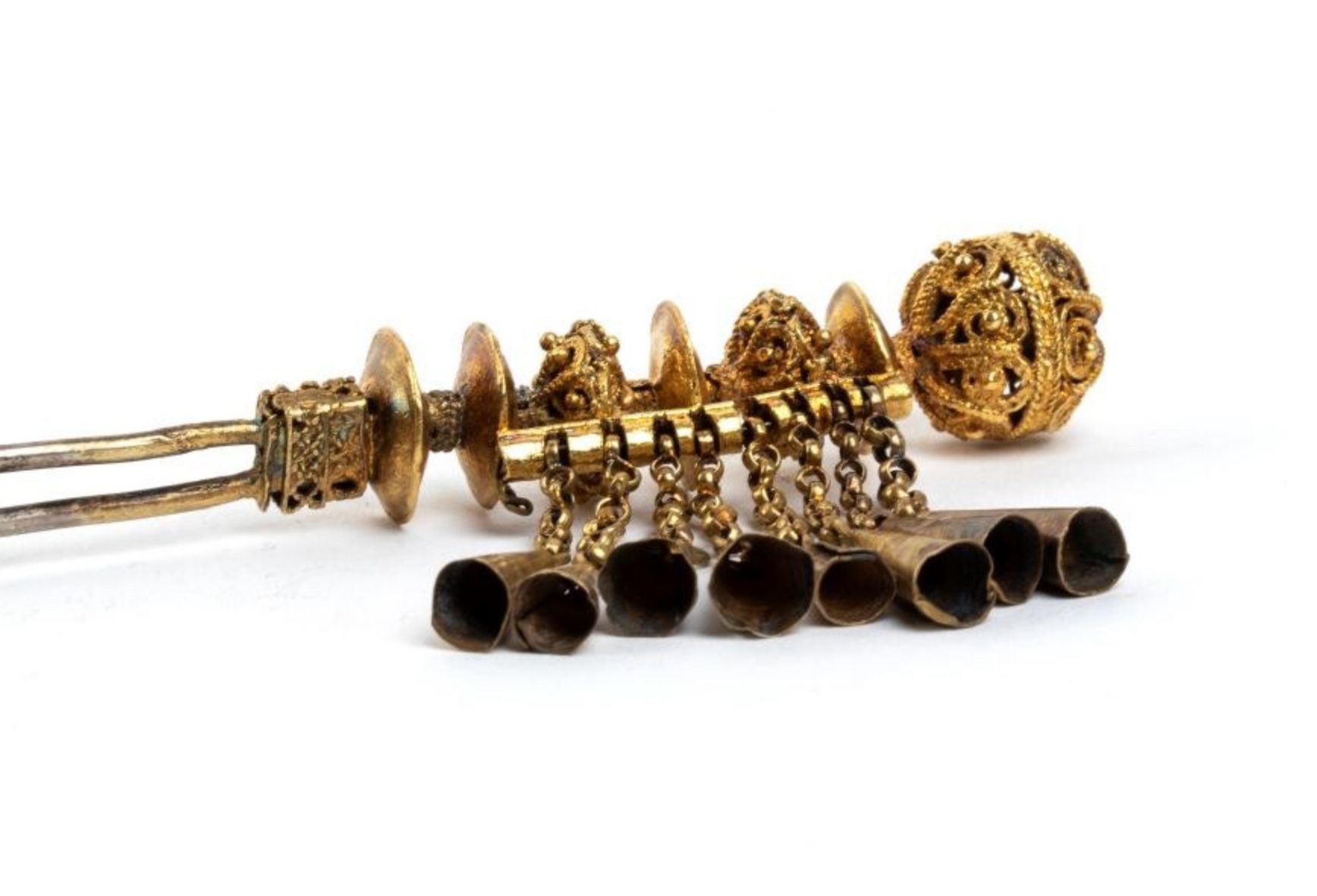Cultural Restitution
SHARE ARTICLE
A new commissioned sculpture marking the latest stage in the Renewable Cultural Partnership between the V&A and the Manhyia Palace Museum in Kumasi has gone on display in the Museum’s Silver Galleries at South Kensington.
Titled Unity, the sculpture is a collaboration between the Asante Royal Goldsmith Nana Poku Amponsah Dwumfour and British-Ghanaian designer Emefa Cole. It depicts a tree crowned by two leaves within a gold disc and reflects the Asante people’s belief in gold as the essence of the sun and the material manifestation of life’s force. Cast in bronze, the sculpture fuses historic Asante with contemporary metalworking techniques
The commission marks the latest development in what has become a significant cultural partnership between the V&A and Ghana’s Manhyia Palace Museum. It’s a partnership that acknowledges the conflict that took place when British forces plundered the court of the Asante king in 1874. These events are referenced in the design and composition of the new commissioned sculpture. At its base, for example, Nana Poku has added small porcupines, a symbol of the nation’s independence by the first Asante king in 1701 and the people’s readiness to protect themselves. There is also a single gold porcupine added to represent the Asante king.

The news follows last year’s agreement by the V&A to lend seventeen items of Asante gold regalia to the Asantehene (King of Asante) for an exhibition at the Manhyia Palace Museum in Kumasi. The exhibition, titled Homecoming, was designed to celebrate the 2024 Silver Jubilee of the current Asantehene, Otumfuo Osei Tutu II, but it also coincides with the 150th anniversary of the 1873-74 Anglo-Asante War.
For the Asante, the return of this regalia has enormous significance, as they believe the regalia contains the spirits of former kings and carries meaning deeply embedded in Asante identity.
Along with sixteen other Asante items from the British Museum, the V&A’s objects have all been returned to Ghana on the basis of a three-year renewable loan, an act described at the time by V&A Director Dr Tristram Hunt as offering a new paradigm for a broader sharing of contested colonial heritage.
This loan of the V&A’s small but significant Asante collection - the first opportunity in 150 years to display the Museum’s collection in Ghana – initiated the potential for a longer-term cultural partnership. The sculpture commission evidences the V&A’s commitment to supporting this partnership model into the future. Rich in symbolism, Hunt said the new sculpture “reflects on our shared history and Britain’s colonial past, while also looking towards a brighter future of friendship and cooperation.”
Although Hunt remains insistent this cultural partnership model should not be seen as "restitution by the back door", he remains an advocate for a review of the National Heritage Act 1983. It is his view that museum trustees should have the responsibility for making the case what objects should or should not be in their collections.
Photos: ‘Unity’ (2025) – A collaboration between the Asante Royal Goldsmith Nana Poku Amponsah Dwumfour and British-Ghanian Emefa Cole
Courtesy of Victoria and Albert Museum, London
More News



